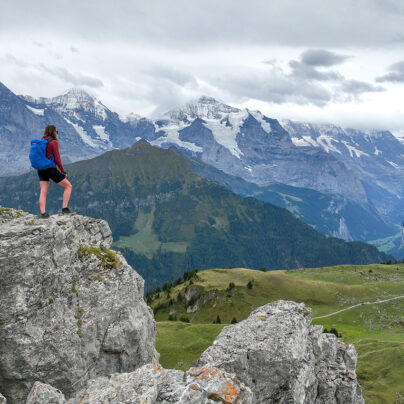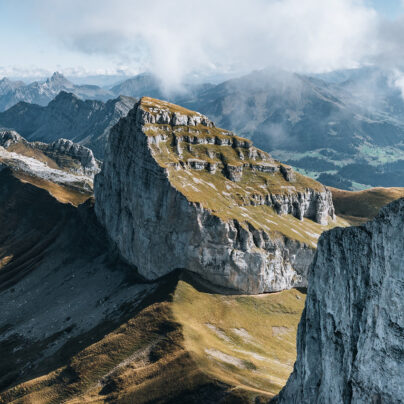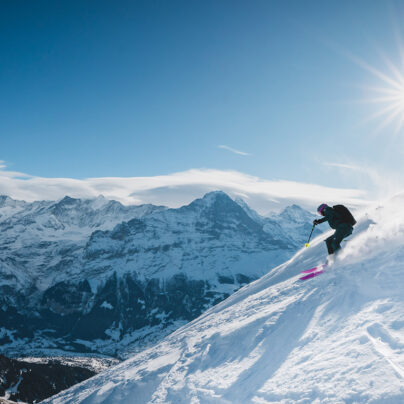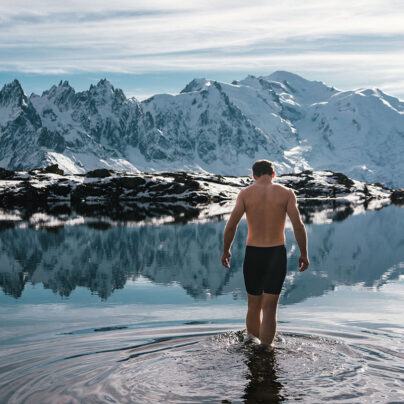The Glen Beyond
Words & Photography by Ian Finch
Film by Jamie Barnes
It was a matter of days before Storm Dudley arrived. After that, the record-breaking ferocity of Storm Eunice would make UK landfall in what would become known as the 100-year storm. We weren’t ready for one front of such violent weather, let alone two.
We’d planned to paddle a remote selection of lochs with a sizeable cross-country portage in between, pulling the canoes behind us in the snow like sledges. If we did this as planned, at this time, we would risk everything – and ultimately risk not achieving anything at all. There would be a high chance we’d be on expedition during the swirling voice of Mother Nature’s Atlantic power, unable to extract. Stranded.
Neil, Kevin, Jamie, and I pored over the congregation of maps on the bed and on the laptop. We crowded in a cabin overlooking a fishing harbour in the north-west of Scotland, south of our original intended location. The sound of gulls and the churning engines of fishing boats permeated the wood-panelled walls. We stood in morning light that streaked through the lace curtains pulled across the windows. Thermals, spare socks, and mugs of tar-thick coffee sat on the table. Into every available corner were tucked paddles, rucksacks, camera cases.
We all had a bold choice to make together. To go with the original plan – to get in hard, around and through before the first storm arrived. Or make a break for a hidden glen, a more linear paddle route we’d previously discussed, secluded and less challenging but a step up in visual beauty. One plan didn’t allow for mistakes. The other was one way in and out. There is always a dichotomy of interest at this stage; Jamie and I have been here before many times on canoe expeditions. There are always decisions to put through the grinder to see what sticks – creative ones, safety elements, expected outcomes – and we discussed them all in our own private parliament, at times driven by our own heated affection for the landscape. We had already shifted the dates of the trip due to inclement weather. It was now time to adjust expectations and move to a secluded body of water two hours south, avoiding the original exposed location. Our new area was deeply secluded, characterised by immense beauty, hidden by old-growth forests and a fortress of mountains. Here prehistoric islands are governed by the rising and falling of its waters – a glen carved by a million hours of wind and grinding ice. Collectively we had made our decision to go south instead of north.


In the passing place the canoes clung like limpets atop the two cars, and we could hear the rushing of river water in spate below. Out over the tumbling valley a low, dense fog hung over the immense Caledonian pines like a blanket. As we clasped the final warmth from the car heaters, the vehicles rolled into the small gravel opening at the tail of the loch. It was 3.00pm in February and the biting cold would soon have its long-awaited chance to find the centre of our bones.
A dam towered like a fortress 100m to our left through the trees. The waters of the loch were mirror still and black as the night that would soon follow. Crows called from treetops. A dusting of snow clung to distant summits. The low fog we’d seen from the high ground had split, stretched, and now hung in the trees as if suspended. I could see pinch points in the loch: forested rock and heather reaching deep into the water. There’s an excitement and an apprehension that precedes the start of any expedition. The unknown permeates the flesh.
The first strokes of our cherry-wood paddles cut through dark waters and propelled our canoes forward into the loch. Both canoes, Jamie and Neil in one, me and Kevin in the other, slipped effortlessly past the arms of rock I’d seen at our boulder-strewn staging point. There is a silent ancestral beauty to paddling, as if you’re invisible and bearing witness to the landscape as it should be seen – in silence. Animals appear willingly and you adhere to the silent rhythms and temperament of nature as the bow of the canoe leads forever forward. There is a poetry to canoeing – the magical and timeless sound a paddle makes in water, the meditative rhythm of drawing the stroke back to repeat the process. The feel of the canoe, the art of paddling, being connected to the great forces of man and water, is a life lesson in itself.
Two hours later, as darkness began to fall, the canoes slid into a swampy bay at the western side of an island. It was deadly quiet. Tree stumps were poised there like relics of the past, rotting roots reaching deep into the mud. The mist still clung to the loch as the evening air cooled further. We surveyed the immediate landscape ahead, paddles horizontal across canoes, for a spot to draw up onto and settle for the night. It was a scene with prehistoric memories: Caledonian pines in mist, black fractured rock, small cliffs. Nothing could feel wilder than this moment. This tangled corner had its own individual beauty, but we needed shelter: flat contours and protection from the oncoming elements. Twenty minutes later, we approached the east side of the same island. A U-shaped gravel beach led onto a flat plateau of pines. At the centre of the cluster of trees was an area big enough for our three tents – space for four men to regroup, recharge, and sip on the single malt that had been drafted in for moments in life like this.



Morning came all too soon. As dawn light permeated my dry cocoon, I pulled loose the drawcord from my sleeping bag. I heard the breeze swaying the upper reaches of the pines and wondered how the wind would affect the loch that lay 20ft from my tired eyes. Birds began calling in unison and grew ever louder as more followed suit. I listened through the blue fabric of the tent. The wild elements of this location were slowly breathing into life at the start of a new day.
Before long, tents were down, Kev and Neil were clasping their first cup of morning coffee, and Jamie was down by the canoes, camera in hand, filming the vital morning elements of a new canoe story. As always, weather – breezy but fair – was the first thing we cast our attention to. Overnight snow had fallen on the high ground, blanketing the summits in a creamy white layer above 500m. We’d been spared lower down. But all would change towards the end of the day. Out across the Atlantic, Storm Dudley had gathered pace and energy and the UK was bracing. The southern part of the UK would be ravaged; in the north the effects would still be dramatic, with gusting winds of 70mph. This forecast put the full paddle to the length of the second loch in jeopardy. Leaning on paddles at the shallow gravel beach, we convened parliament, scrutinised maps, and chose exits and staging points if things got worse. Portages and safety routes out left nothing to chance.
Twenty minutes later, we slipped back out onto the loch. Ahead lay the largest part of the paddle and the widest part of the body of water. The sun dipped and swung behind the clouds, giving our hands moments to warm to full dexterity, and I could see waves moving from right to left. When we rounded the island’s corner we would be paddling into a headwind for the rest of the day. So we clung close to the shores, the water so clear you could see each boulder and rock beneath our canoes. The dancing streams of sun on the water illuminated the blackness, giving a brief insight into the ancient ecology below. Island after island gave us respite from the increasing winds and darkening anger of the clouds.
As morning became afternoon the worsening headwind and waves had settled into a predictable and manageable pattern. Breaks in the clouds gave way to sun-drenched summits above the eastern and western shorelines. Impenetrable layers of Caledonian pines and heather led up into the bare hillsides of the surrounding mountains. Towards the end of the day, weathered and cold, we emerged at the end of the loch and an exit point of a river in spate. From the maps we knew this wound its way from the tail of the second loch. Either side of the river, a small gorge steeply rose into the pines. We could go no further by water today.



After pulling the canoes into a steep bank of boulders, we waded across and tied off the throw ropes to two adolescent birch trees clinging to the shoreline. Then we convened parliament once again. Looking at the maps, we had only one option to access the loch beyond at this time of day and in the fading light: a sizeable portage across the dense pine and heather landscape. Leaving the canoes, we recced the route ahead for at least 600m with minimal equipment. Through dense vegetation and over fallen trees, along narrow winding animal tracks and back to the canoes, we surveyed the best possible low-level route ahead. Carrying the weighty canoes and all the equipment, we estimated it was going to be a multi-return slog taking two to three hours without rests. In our direction of travel the skies were darkening. The V-shaped glen funnelled the weather in our direction from the coast. Mountains we’d seen from the loch were now invisible behind walls of weather, and the winter sun was slowly losing its fight for dominance. We knew what was coming – it was only a matter of time.
One person at the front and one at the back, the canoes would go first and be carried until they could be pulled along the heather on our makeshift harnesses. We hoisted the canoes up, then in one motion over the tops of our heads until the gunwales sat near our shoulders. For 200m we carried the canoes to our next staging point. Our original plan had been to wear snowshoes and pull the canoes like Arctic pulks on harnesses across the snow. However, as the colder conditions hadn’t reached this far down, our only option was to carry the boats across this challenging terrain to a point where we could pull them across something softer: the heather.
One hour later, sweating and breathing hard, we stood beside the canoes lying side by side at the top of a small hill. In the seconds between heavy breaths the landscape ahead grew darker and more ominous. Summits disappeared and reappeared in the walls of weather slowly moving towards us. The sun had given its final show for the day as driving sleet began to fall.
Another two journeys later, four men, two canoes, and all their equipment sat at the rocky rise of the hill looking into the distant glen. Sleet shearing sideways began to gradually stop. Then a moment of clarity between the clouds, and the closest mountains reappeared in view, bathing in winter sun. Sporadic pines jutted out from the heather in this rolling canvas. The sound of the river to the left overpowered everything. In the fading light we strapped the ropes to the canoes and created the loop harness we had used on previous expeditions, designed to pull the canoes across miles of mountain landscapes. We began to drag the canoes like a cart horse pulling its goods to the market. Within 100m the canoes tilted, turned, and rotated – then again and again. This wasn’t going to work across this difficult undulating terrain as it had many times before.
Parliament convened amongst the heather. We decided it was more efficient to carry the canoes over our heads for the entire way – which was now another hour’s journey to a place we’d designated as our camp spot. The sands of time were now falling through our fingers as fast as the sleet that had again resumed. An hour later, wet, cold, and shivering, we brought the final round of equipment across the heather and into our spot designated for tents. The canoes again lay lifeless and dormant, covered in sleet and snow.



I woke to condensation dripping like water torture on my cheek. Drip, drip, drip. As my eyes adjusted to the light, I realised I was shivering. I looked around; the tent’s fabric seemed drawn in and weighed down. As my eyes adjusted further, I noticed snow slipping from the top of the tent. Fighting my way out of the damp sleeping bag I unzipped the main door of the tent to see the layer of snow that blanketed everything, including the canoes. Jamie and Neil’s tents were covered in a thick layer; maybe two inches had fallen overnight as the leading edge of the Atlantic weather front moved over. Now the winds began to pick up. My tent shook, its fabric being put through its paces as the wind became more determined with each passing minute.
We emerged from the tents into the pale light of snow on heather. It was another junction in our expedition.
From our location we could see a small bridge over the mouth of the second loch. From there it opened up for another four or five miles of open water and jagged dead-end valleys. Even at its most sheltered point the loch was a violent tangled mess of winds in all directions. White rollers tipped each wave, and the pines bent and rocked in the weather sweeping down the loch at speed. The quietest and most sheltered corners of the loch had water tumbling and crashing over shoreline boulders.
My heart sank. I knew that the leading edge of the storm was on its way from the coast – this was only the start, and it would be suicide to paddle any further in these conditions. Parliament was convened for the last time around a bubbling stove of hot water and the last remnants of our oatmeal breakfasts. We knew that our time was up on the expedition. Back in the south-west, weather warnings were blinking red and we were starting to see our own warning signals in the far north. The beating drum of Storm Dudley was growing louder and louder. Storm Eunice was lying in wait for round two. We surveyed the loch one more time, hoping to find calmer conditions on the quieter side, but gusts ripped across the water as if it had a life of its own. That made the decision for us. It was over.
One day later, wind, rain, and snowstorms ripped through Scotland with a ferocity rarely seen. We would have been out by the water, or at the very least hunkered in a sheltered position, had we pushed on. Moving down the motorway towards Inverness we watched the snowdrifts being cleared by snowploughs. The landscape was white and silent, our conversation subdued. I think we can fairly say that this is the expedition that got away.
Words and photography by Ian Finch // @ianefinch
Film by Jamie Barnes // @jamiebarnesuk
Featuring Kev Merrey // @skyrise_productions
And Neil Irwin // @neil_irwin







